 Last additions - Takashima 高島市 Last additions - Takashima 高島市 |

Monument for Adogawa's 300-year fan production.Aug 26, 2008
|
|

Toju-no-Sato Adogawa also has a small fan museum.Aug 26, 2008
|
|

Adogawa is also noted for the production of the bamboo ribs for Japanese folding fans.Aug 26, 2008
|
|

How bamboo ribs for Japanese folding fans are made.Aug 26, 2008
|
|

One famous local specialty is the Adoberry, a boysenberry-like berry used to make diverse products such as jam, juice, cakes, etc.Aug 26, 2008
|
|

Toju-no-Sato Adogawa, a roadside shopping and restaurant complex (michinoeki) selling local products. MAPAug 26, 2008
|
|

Statue of Nakae Toju expressing filial piety for his mother. In front of Toju-no-Sato Adogawa.Aug 26, 2008
|
|

Inside Toju-no-Sato Adogawa. Fresh produce, drinks, sweets, snacks, and souvenirs are sold.Aug 26, 2008
|
|

Nakae Toju portraitAug 26, 2008
|
|

Toju Shoin Study (drawing room). 藤樹書院Aug 26, 2008
|
|

Wooden sculpture of Nakae TojuAug 26, 2008
|
|

Inside Ryochikan, an exhibition and rest house. 良知館Aug 26, 2008
|
|

Aug 26, 2008
|
|

Aug 26, 2008
|
|

Aug 26, 2008
|
|

Scroll of Nakae Toju in the Toju Shoin Study (drawing room). 藤樹書院Aug 26, 2008
|
|

Toju Shoin Study (drawing room) where Toju lived and taught. Reconstruction of the original building which burned down. 藤樹書院Aug 26, 2008
|
|

Aug 26, 2008
|
|

Toju Shoin Study (drawing room). 藤樹書院Aug 26, 2008
|
|

Inside Toju Shoin Study (drawing room). 藤樹書院Aug 26, 2008
|
|

Rear of Toju Shoin Study.Aug 26, 2008
|
|

Temple with Nakae Toju's gravestone. 藤樹先生墓所Aug 26, 2008
|
|

Nakae Toju's gravestone (left) in Adogawa, Takashima. 藤樹先生墓所Aug 26, 2008
|
|

Clear stream next to the Toju Shoin Study.Aug 26, 2008
|
|

Toju ShrineAug 26, 2008
|
|

Toju ShrineAug 26, 2008
|
|

Toju Jinja Shrine. 藤樹神社Aug 26, 2008
|
|

Toju Shrine main hallAug 26, 2008
|
|

Library in Nakae Toju Memorial HallAug 26, 2008
|
|

Inside Nakae Toju Memorial HallAug 26, 2008
|
|

Aug 26, 2008
|
|

Nakae Toju Memorial Hall is a small museum dedicated to Toju. Open 9 am to 4:30 pm. Closed Mon. during Oct.-Feb. 中江藤樹記念館 MAPAug 26, 2008
|
|

Yomeien Garden 陽明園Aug 26, 2008
|
|

Yomeien GardenAug 26, 2008
|
|

Yomeien Garden, Adogawa, Shiga 陽明園 MAPAug 26, 2008
|
|

Yomeien Garden 陽明園Aug 26, 2008
|
|

Yomeien Garden 陽明園Aug 26, 2008
|
|

Gate to Yomeien Garden, a Chinese-style garden.Aug 26, 2008
|
|

Gate to Yomeien GardenAug 26, 2008
|
|

Misspelled word (Prirate).Aug 26, 2008
|
|

Way to Nakae Toju's hometown.Aug 26, 2008
|
|

Sign announcing that Adogawa is the birthplace of Nakae Toju.Aug 26, 2008
|
|

Street corner plaque with one of Toju's sayings.Aug 26, 2008
|
|

Way to Nakae Toju's hometown.Aug 26, 2008
|
|

Statue of 17th-century Confucian philosopher Nakae Toju in front of Adogawa Station. He is noted for embodying filial piety, especially to his mother. 中江藤樹Aug 26, 2008
|
|

Sign outside Adogawa Station announcing the 400th anniversary in 2008 of Confucian philosopher Nakae Toju's birth.Aug 26, 2008
|
|

Statue of Nakae Toju (1608–1648) in front of Adogawa Station. He is one of Takashima city's favorite sons. 中江藤樹Aug 26, 2008
|
|

JR Adogawa Station (East exit) on JR Kosei Line. MAPAug 26, 2008
|
|

The photo exhibition was held at the Biwako Shuko no Uta Shiryokan museum. Many of the photos were also contributed by Philbert Ono.Aug 21, 2008
|
|
|

Writing the winner's name on award certificates.Aug 21, 2008
|
|
|

During Aug. 2008, the Imazu Junior High School Rowing Club also held a photo exhibition of their rowing trip across Lake Biwa held in Aug. 2007.Aug 21, 2008
|
|

Ichikawa Kiyoshi, head of the Takashima-Imazu Rowing Club NPO, gives the awards to the winners. The Lake Biwa Rowing Song was also played in the background. 「琵琶湖周航の歌」英語版CDも一つの賞品として寄付しました。Aug 21, 2008
|
|
|

We rowed the boat to near the boathouse. It was a spanking-new boat, and felt good.Aug 21, 2008
|
|

Awards for nine racing categories. The Lake Biwa Rowing Song CD was also donated by Philbert Ono as one of the prizes.Aug 21, 2008
|
|

Carrying the boat to shore.Aug 21, 2008
|
|

Nice new quadruple boat owned by the Takashima-Imazu Rowing Club NPO.Aug 21, 2008
|
|

I got to row in this quadruple boat.Aug 21, 2008
|
|

Imazu Junior High School Rowing Club banner and members going to the regatta's awards ceremony.Aug 21, 2008
|
|

Nice new quadruple boat owned by the Takashima-Imazu Rowing Club NPO.Aug 21, 2008
|
|

Aug 21, 2008
|
|

Chikubushima in the background with fixed-seat boat racing.Aug 21, 2008
|
|

Imazu shoreAug 21, 2008
|
|

Aug 21, 2008
|
|

Fixed-seat boat race.Aug 21, 2008
|
|

Aug 21, 2008
|
|

Mt. Ibuki in the background with fixed-seat boat racing. The Lake Biwa Rowing Song was also played as the regatta's background music.Aug 21, 2008
|
|

Fixed-seat boat race. フィックス艇Aug 21, 2008
|
|
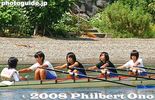
Aug 21, 2008
|
|

Aug 21, 2008
|
|

Finish line.Aug 21, 2008
|
|

Near the finish line.Aug 21, 2008
|
|

Aug 21, 2008
|
|

Aug 21, 2008
|
|
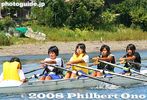
Imazu Junior High School female students rowing in the 3rd Imazu Regatta.Aug 21, 2008
|
|

Imazu Junior High School female students rowing in the 3rd Imazu Regatta.Aug 21, 2008
|
|
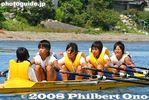
Imazu Junior High School female students rowing in the 3rd Imazu Regatta. Also see my YouTube video here.Aug 21, 2008
|
|

Aug 21, 2008
|
|

Aug 21, 2008
|
|

Aug 21, 2008
|
|

Imazu Junior High School female students rowing in the 3rd Imazu Regatta.Aug 21, 2008
|
|

Imazu Junior High School students start the race.Aug 21, 2008
|
|

Aug 21, 2008
|
|

Imazu Junior High School studentsAug 21, 2008
|
|

Starting lineAug 21, 2008
|
|

Women's single scullAug 21, 2008
|
|

Aug 21, 2008
|
|

Aug 21, 2008
|
|

Single scullAug 21, 2008
|
|
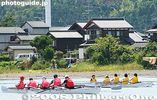
Quadruple raceAug 21, 2008
|
|

Ready to race.Aug 21, 2008
|
|

The other quadruple with cox boat.Aug 21, 2008
|
|

Aug 21, 2008
|
|

Aug 21, 2008
|
|

Regatta starting line. By hosting a regatta, the local junior high and high school kids can learn about the hard work that goes behind a regatta.Aug 21, 2008
|
|

The regatta's main objective is to have more people try rowing as a sport.Aug 21, 2008
|
|

Quadruple with cox. This boat belongs to the NPO. The races were separate for men and women.Aug 21, 2008
|
|

Quadruple with cox going to the start line.Aug 21, 2008
|
|

Five types of boats were provided: Single scull, double scull (shown here), quadruple with cox, ocean scull, and fixed-seat boats.Aug 21, 2008
|
|

There were four racing categories: 1. Junior and high school students, 2. General public (beginners or experienced), 3. Rowing club alumni and experienced rowers, and 4. Combination of 2 and 3.Aug 21, 2008
|
|

The finish line was in front of the Sunbridge Hotel seen here. It was a nice, sunny, and calm day for a regatta. レガッタのBGMは「琵琶湖周航の歌」英語版。Aug 21, 2008
|
|

Finish line. It cost only 500 yen (insurance) to race in the regatta. You do not have to form a rowing team to participate. Single individuals could also register to race in the regatta.Aug 21, 2008
|
|

The regatta race course was 500 meters long off the Imazu Nakahama and Ichigasaki shore. It had four rowing lanes. 今津中浜〜市が崎沖合Aug 21, 2008
|
|

In Aug. 2006, a local NPO called the Takashima-Imazu Rowing Club restarted the Imazu Regatta with the support of the rowing clubs from Imazu Junior High School and Takashima High School.Aug 21, 2008
|
|

Site of the 3rd Imazu Regatta on Lake Biwa, off the shore of Imazu, Takashima. Held on Aug. 17, 2008, from 9:30 am to 2:30 pm. Organized by the Takashima-Imazu Rowing Club NPO. 高島・いまづロウイングクラブAug 21, 2008
|
|
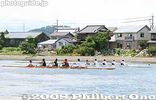
The Imazu Regatta was originally held annually during 1927-36 by the rowing club of the local high school in Imazu (the present Takashima High School). However, the war forced the annual regatta's cancellation.Aug 21, 2008
|
|

View of Imazu shore from Imazu Sun Bridge Hotel. 今津サンブリッジホテルDec 04, 2007
|
|

View of Imazu from Imazu Sun Bridge Hotel, Imazu's highest building.Dec 04, 2007
|
|

View of Imazu from Imazu Sun Bridge Hotel.Dec 04, 2007
|
|

Path through the grove of Eastern Skunk Cabbage flowers 座禅草Oct 03, 2007
|
|

Eastern Skunk Cabbage flower 座禅草Oct 03, 2007
|
|

Eastern Skunk Cabbage flower 座禅草Oct 03, 2007
|
|

Confection in the shape of Eastern Skunk Cabbage flowersOct 03, 2007
|
|

Entrance to grove of Eastern Skunk Cabbage (zazenso). This is too far to walk from the train station, so you'll need a car to get here. 座禅草Oct 03, 2007
|
|

Eastern Skunk Cabbage flowers 座禅草Oct 03, 2007
|
|

Imazu is also noted for zazenso Eastern Skunk Cabbage flowers blooming in Feb. and March.Oct 03, 2007
|
|

These flowers actually generate heat, so if it's a snowy ground, the snow around the flower would be melted.Oct 03, 2007
|
|

Inside the boat houseAug 14, 2007
|
|
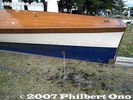
Water drainAug 14, 2007
|
|
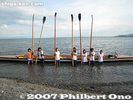
"Tell us my friends your stories, with your fervent hearts."「語れ我がが友 暑き心」 Also see my YouTube video here.Aug 14, 2007
|
|
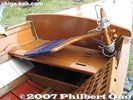
Cox seat and rudder (removed). Beautiful boat, and I'm darn happy to have rowed on this rare boat. Felt almost like Oguchi Taro.Aug 14, 2007
|
|
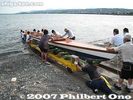
Aug 14, 2007
|
|

Fixed seatAug 14, 2007
|
|
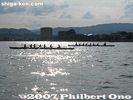
Target destination in sightAug 14, 2007
|
|

Aug 14, 2007
|
|

Oarlock on fixed-seat boatAug 14, 2007
|
|
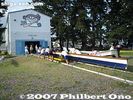
Hauling the fixed-seat boat to the boat houseAug 14, 2007
|
|
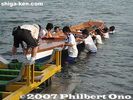
The boat is first carried onto a trolley.Aug 14, 2007
|
|
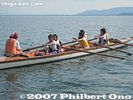
They refused to be pulled by the fishing boat. They wanted to row all the way home to Imazu.Aug 14, 2007
|
|

Aug 14, 2007
|
|
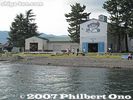
Imazu boathouseAug 14, 2007
|
|
|
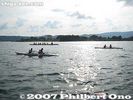
Fixed-seat boats and ocean sculls rendezvous toward home in Imazu.Aug 14, 2007
|
|
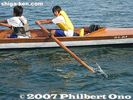
Catch, row, catch, row...Aug 14, 2007
|
|
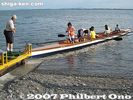
Bringing the boat to dock.Aug 14, 2007
|
|
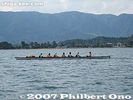
Off Makino Sunny BeachAug 14, 2007
|
|
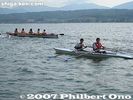
Aug 14, 2007
|
|
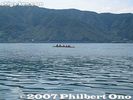
"With our sights set nowhere, rolling with the waves..."「ゆくえ定めぬ、波枕」Aug 14, 2007
|
|
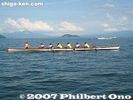
Sleek boat slicing through the water.Aug 14, 2007
|
|
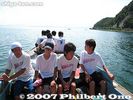
Fishing boat for human transport. It was a very hot day with no wind.Aug 14, 2007
|
|
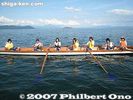
All-girl crew pose for a picture. The rowing club has more girls than boys. はい、ポーズ!Aug 14, 2007
|
|
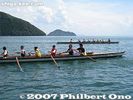
Fixed-seat boatsAug 14, 2007
|
|
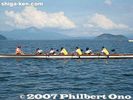
"Today is Imazu or, Nagahama huh..."「今日は今津か 長浜か」Aug 14, 2007
|
|
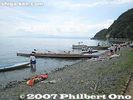
SugauraAug 14, 2007
|
|
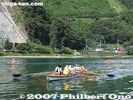
Rowing away from SugauraAug 14, 2007
|
|
|
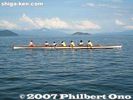
Fixed-seat boat with Mt. Ibuki and Chikubushima in the background. 千秋・太郎号のフィックス艇Aug 14, 2007
|
|
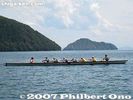
Departing Sugaura with Chikubushima in the background.Aug 14, 2007
|
|
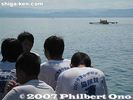
Boys watch their classmates row.Aug 14, 2007
|
|
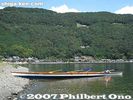
Fixed-seat boat フィックス艇Aug 14, 2007
|
|
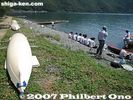
Lunch break at Sugaura, a scenic lakeside town. It is also where the scenic Oku Biwako Parkway road starts.Aug 14, 2007
|
|
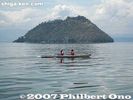
Ocean scull rowers and a sickly Chikubushima going bald. The numerous cormorants are killing off the trees on the island.Aug 14, 2007
|
|
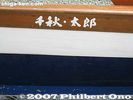
This boat's name is "Chiaki/Taro," named after the writer (Oguchi Taro) and composer (Yoshida Chiaki) of the song, Biwako SHuko no Uta.Aug 14, 2007
|
|
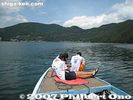
Heading toward Sugaura, Nishi-Azai in northern Lake Biwa.Aug 14, 2007
|
|
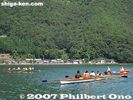
Departing SugauraAug 14, 2007
|
|
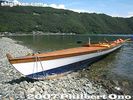
I love the design of this boat. 千秋・太郎号のフィックス艇Aug 14, 2007
|
|
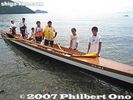
Boys posing for a picture at SugauraAug 14, 2007
|
|
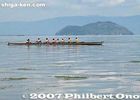
Chikubushima and fixed-seat boatAug 14, 2007
|
|
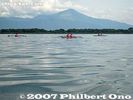
Three ocean sculls wander in front of Mt. IbukiAug 14, 2007
|
|
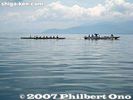
Getting a free ride were these girls heading for Sugaura, a small town on the northern shore of Lake Biwa.Aug 14, 2007
|
|
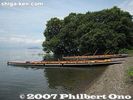
Twin fixed-seat boats. One is named "Chiaki/Taro" and the other is called "Yodo," after Yodogawa River in Osaka. Lake Biwa's water feeds Yodogawa River.Aug 14, 2007
|
|
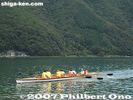
Approaching SugauraAug 14, 2007
|
|
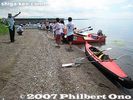
Rowers changed boats. Those without a rowing boat were transported on the fishing boats.Aug 14, 2007
|
|
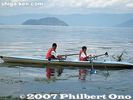
Chikubushima and ocean scullAug 14, 2007
|
|
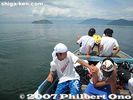
Chugging along on a fishing boat.Aug 14, 2007
|
|
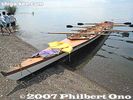
Our fixed-seat boat 千秋・太郎号のフィックス艇Aug 14, 2007
|
|
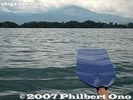
"Hira and Ibuki too, only but a dream"Aug 14, 2007
|
|
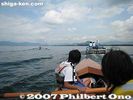
We were far behind, so a support boat pulled us along. Two fishing boats provided support for the rowing trip.Aug 14, 2007
|
|
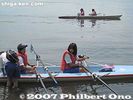
Ocean scullAug 14, 2007
|
|
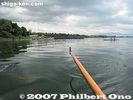
After about an hour, our first on-shore break, nears Sports no Mori in northern Nagahama.Aug 14, 2007
|
|
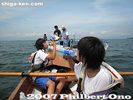
Yes, replenishing your fluids is important...Aug 14, 2007
|
|

"This journey fills my heart with intense happiness..."「さすらいの 旅にしあれば しみじみと」Aug 14, 2007
|
|

And girls on the other fixed-seat boat. These boats have fixed seats which do not slide as in modern rowing boats. This boat is a replica of the fixed-seat boat used 90 years ago by Oguchi Taro and crew when he wrote the song, Biwako Shuko no Uta.Aug 14, 2007
|
|

"We're children of the lake, off to wander 'round..." (Mt. Ibuki in the distance)「われは湖の子...」Aug 14, 2007
|
|

I wanted to experience rowing this fixed-seat boat on Lake Biwa, and rowed with these jr. high girls from Nagahama Port. 千秋・太郎号のフィックス艇Aug 14, 2007
|
|
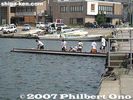
Off we go, boys on one fixed-seat boat.Aug 14, 2007
|
|
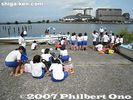
In the morning, two fishing boats pulled the rowing boats from Imazu to Nagahama Port where we met them here. 今津中学校ボート部の琵琶湖周航Aug 14, 2007
|
|

Two fixed-seat boats were also used.Aug 14, 2007
|
|
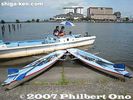
They used five boats to row, including these two ocean scull boats.Aug 14, 2007
|
|
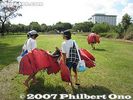
Almost 50 members in the club, and almost all of them participated in this rowing trip. Some of them did this for the third time. Photo: Carrying life vests. All rowers are required to wear life vests.Aug 14, 2007
|
|
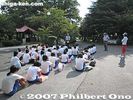
On Aug. 8, 2007, I was allowed to join the Imazu Jr. High School Rowing Club as they rowed from Nagahama to Imazu. Photo: A briefing by the club's coach before departure in front of a minshuku lodge near Nagahama Castle.Aug 14, 2007
|
|
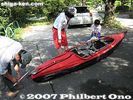
This "Biwako shuko" (Rowing around Lake Biwa) between Imazu and Nagahama was the club's annual summer tradition since 1995. Photo: Assembling a two-man kayak.Aug 14, 2007
|
|

On the day before, they were supposed to row from Imazu to Nagahama, but high waves forced cancellation. So they were bused to Nagahama where they stayed overnight. Photo: Carrying the kayak to the lake, passing by Nagahama Castle.Aug 14, 2007
|
|
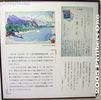
Handpainted postcard from Taro Oguchi mailed from Imazu on June 28, 1917.During the rowing trip, Oguchi wrote a postcard to a friend back at the school dorm in Kyoto. One side of the card has his watercolor painting of Omatsu with pine trees on the sandy beach and a boat pier. Oguchi was quite good at painting.
Oguchi sent the postcard from Imazu on June 28, 1917, in the evening sometime between 9 pm and midnight after arriving from Omatsu. He sent it to a friend named Hiroshi Kodama back at the school dorm in Kyoto. However, the friend never received the postcard since he was back in his hometown in Niigata Prefecture for the summer.
The postcard was returned to Oguchi who kept it. If his friend had received the postcard, he would have certainly thrown it away (as he later mentioned in an interview). This postcard has survived miraculously and it is key evidence for the exact date when they were in Imazu where the song was created.
On the postcard, Oguchi writes about how easy it was to row to Omatsu the day before, thanks to a strong tailwind. He notes that Omatsu was a lonely place with only one lodge. They tied up the boat in the pond and rolled around on the sand till late night while gazing at the moon and dreaming of a beautiful girl. That morning, they played tug of war (it was fun). He also mentions that they were to lodge in Imazu that night.Mar 10, 2007
|
|

Biwako Shuko no Uta Shiryokan (Lake Biwa Rowing Song Museum), Imazu 琵琶湖周航の歌資料館Mar 10, 2007
|
|

Model of fixed-seat boat used during Oguchi Taro's time in 1917.Model of the fixed seat boat that Taro Oguchi and crew used to row around Lake Biwa. Displayed at the song museum in Imazu. The boat is quite stable and thus suited for long rowing trips. However, it became obsolete in the 1960s as competitive rowing boats incorporated sliding seats.
In 1993, a boat craftsman built two of these and donated them to Imazu. They measure 13.7 meters long and 1.25 meter wide. Seats 6 crew. They are available for rent at Imazu.Mar 10, 2007
|
|

Panel showing Japanese lyrics, old and new. Biwako Shuko no Uta Shiryokan, ImazuOne of the exhibition panels with the song lyrics showing all the little quirks and idiosyncrasies of the words. This is the first verse.Mar 10, 2007
|
|

Model of fixed-seat boatMar 10, 2007
|
|

Model of fixed-seat boat, Biwako Shuko no Uta Shiryokan museumMar 10, 2007
|
|

Old Imazu Port. Notice the "red flame" song monument on the right.Mar 10, 2007
|
|

Biwako Shuko no Uta Birthplace Monument, Imazu. This is Imazu's second monument for the song. 全歌詞碑の「琵琶湖周航の歌」誕生の地 今津。今津港。背景には竹生島行きの船。Imazu has two monuments for the song. The first one is a lamp at the end of the pier (visible in this picture on the right of the boat). That was for Verse 3 which is written on the lamp post.
Later in 1994, Imazu town built this red clay monument to commemorate the song's birth in Imazu. The entire lyrics is also engraved. It is next to the Imazu boat pier where boats depart for Chikubushima. Looks like a red flame, but it's shaped after the geographical shape of Imazu town.
From Imazu, you can easily go to Chikubushima island, from which you can take another boat to go to Hikone or Nagahama. Going vice versa is possible too. It's a great way to cross the lake.
See more photos of Imazu here.Mar 10, 2007
|
|

In winter, road toward Imazu PortNov 24, 2006
|
|

Shopping arcadeNov 24, 2006
|
|

In the old Imazu Port building, snowy seats in winter.Nov 24, 2006
|
|

Nov 24, 2006
|
|

Lakeshore road in winterNov 24, 2006
|
|

Imazu in winterNov 24, 2006
|
|

Outdated photo: Waiting lounge at Imazu Port in winter.Nov 24, 2006
|
|

Song monument buried in snow at Imazu Port in winter.Nov 24, 2006
|
|

Song monument and snowNov 24, 2006
|
|

On the shore is a small stone wall and foundation, the remains of the Kaga Clan's magistrate's office. Imazu was within the Kaga domain (centering on Ishikawa Prefecture) during the Edo Period.Nov 01, 2005
|
|

Nov 01, 2005
|
|

Shopping arcade on the west side of Omi-Imazu StationOct 22, 2005
|
|

Omi-Imazu station, west sideOct 22, 2005
|
|

In front of Omi-Imazu Station, East ExitOct 22, 2005
|
|

Omi-Imazu Station on JR Kosei Line, East ExitOct 22, 2005
|
|

Omi-Imazu Station, west sideOct 22, 2005
|
|
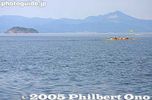
Chikubushima and Mt. Ibuki as seen from Imazu.Oct 22, 2005
|
|

Inside Omi-Imazu StationOct 22, 2005
|
|

Former bank buildingOct 22, 2005
|
|

Omi-Imazu Station, west exit has bus stops for local buses.Oct 22, 2005
|
|

Oct 22, 2005
|
|
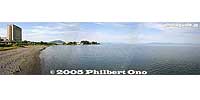
Lake Biwa shore in Imazu, with a boat landing in the distanceOct 22, 2005
|
|

Black kite going fishing トビOct 22, 2005
|
|

Inside the former bank buildingOct 22, 2005
|
|
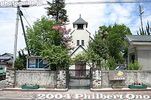
Imazu Church, designed by William Merrell Vories. Next to the former bank building also designed by Vories.Oct 22, 2005
|
|

Imazu's main lakeshore road leads to more tourist sights.Oct 22, 2005
|
|

List of cover versions by singers like Miyako Harumi, Kobayashi Akira, Watari Tetsuya, Baisho Chieko, Frank Nagai, and more.Oct 22, 2005
|
|

Imazu also has a few buildings designed by William Merrell Vories like this former bank building in Imazu, Shiga Now a coffee shop and exhibition space. MAPOct 22, 2005
|
|

Made of wood. The seats do not move. It is an obsolete racing boat.Oct 22, 2005
|
|
|

Road from Imazu Port to Omi-Imazu Station.Oct 22, 2005
|
|

This is the old Imazu Port building. It was a two-story building with a small restaurant on the 2nd floor. Ironically, it had no enclosed interior space for passengers.Oct 22, 2005
|
|

Oct 22, 2005
|
|

Lake Biwa from Imazu shore. Mt. Ibuki in the distance.Oct 22, 2005
|
|

Scenic water on sunny day, TakashimaOct 22, 2005
|
|

Oct 22, 2005
|
|

Imazu has a pebble beach. Some sand as well.Oct 22, 2005
|
|

The lantern/monument has the Verse 3 lyrics mentioning a red fire on shore in Imazu. This is thought to be a lamp on the dock.Oct 22, 2005
|
|

Chikubushima as seen from Imazu PortOct 22, 2005
|
|

The lantern is not accessible when the dock is not used.The song became a national hit in 1971 when singer Tokiko Kato recorded it. Numerous famous Japanese singers and groups have since released cover versions of the song.Oct 22, 2005
|
|

At the end of Imazu Port's dock is a lantern which is a song monument.Oct 22, 2005
|
|
|

Outdated photo: Red flame monument for Biwako Shuko no Uta song 琵琶湖周航の歌 歌碑Oct 22, 2005
|
|

The monument has an engraving of rowers and song lyrics.Oct 22, 2005
|
|
|

Outdated photo: Arriving Imazu Port. This old port building was replaced by new building in March 2020. MAPOct 22, 2005
|
|
|
| 995 files on 4 page(s) |
 |
4 |
|